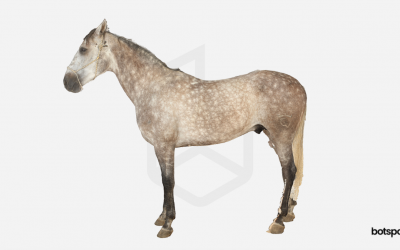DIGITIZATION OF AUTOMOTIVE PARTS WITH COMPLEX GEOMETRY
7-Lights is specialized in headlight conversions and is realizing the individual requests of its numerous clients since 2015. Whether LED conversions, headlight painting, restoration or repair services – the Lower Saxony-based manufactory offers a wide repertoire of services to make the hearts of automotive lovers sing.
For the realization of one of their projects, the company needed additional copies of an automotive component. Since these were not available on the market, 7-Lights decided to reproduce them using a 3D printer. This required a high-precision digital template of the 13cm x 8cm sized object.
For the generation of the digital print template, the challenge was in the complex geometry of the automotive part. For this reason, the auto mechanics decided to digitize it with the help of a 3D scan and against a manual CAD design.
With our photogrammetric data capture, we were able to scan the automotive part quickly and with high precision in 3D. We created the required model with a pixel resolution of 0.013 mm. To reduce the computing overhead on the receiver side, we compressed the file from 32 million to 2 million polygons.
This was done while maintaining a high resolution of the 3D model. Afterwards, we sent the customer an STL file for an immediate use.
“botspot works with a lot of effort to find the best solution for the customer – with success. We are very satisfied and recommend botspot with a clear conscience!”
– Richard Spanagel, 7-Lights
3D digitization of components has become an essential part of many industrial sectors. Scanning objects is a highly efficient alternative to CAD modelling: larger elements as well as fine structures can be digitized in a very short time and exported in different formats, depending on the subsequent manufacturing process.
In addition to reproduction using 3D printing technology, the 3D models can be used for high-precision measurements within industrial quality control.
Furthermore, they allow an entirely digital construction process. This goes hand in hand with an enormous saving of resources and enables the networked collaboration of several participants on one project.



